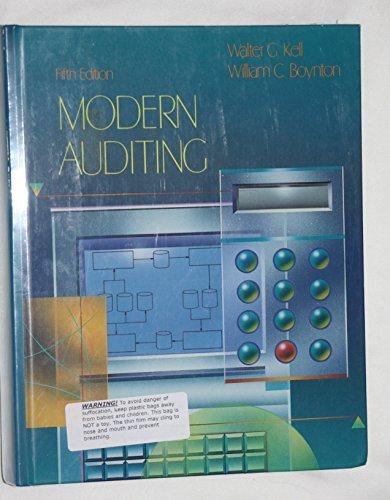| 1. (TCOs 1 and 8) Wade and Paul form Swan Corporation with the following investments. Wade transfers machinery (basis of $40,000 and fair market value of $100,000), while Paul transfers land (basis of $20,000 and fair market value of $90,000) and services rendered (worth $10,000) in organizing the corporation. Each is issued 25 shares in Swan Corporation. What happens with respect to the transfers? (Points : 5) | Wade has no recognized gain; Paul recognizes income/gain of $80,000. Neither Wade nor Paul has recognized gain or income on the transfers. Swan Corporation has a basis of $30,000 in the land transferred by Paul. Paul has a basis of $30,000 in the 25 shares he acquires in Swan Corporation. None of the above |
| 2. (TCOs 1 and 8) Leah transfers equipment (basis of $400,000 and fair market value of $500,000) for additional stock in Crow Corporation. After the transfer, Leah owns 80% of Crow's stock. Associated with the equipment is Section 1245 depreciation recapture potential of $70,000. As a result of the transfer, (Points : 5) | Leah recognizes ordinary income of $70,000. the Section 1245 depreciation recapture potential carries over to Crow Corporation. the Section 1245 depreciation recapture potential disappears. Leah recognizes ordinary income of $70,000 and 1231 gain of $30,000. None of the above |
| 3. (TCOs 1, 8, and 9) Adam transfers cash of $300,000 and land worth $200,000 to Camel Corporation for 100% of the stock in Camel. In the first year of operation, Camel has net taxable income of $70,000. If Camel distributes $50,000 to Adam, (Points : 5) | Adam has taxable income of $50,000. Camel Corporation has a tax deduction of $50,000. Adam has no taxable income from the distribution. Camel Corporation reduces its basis in the land to $150,000. None of the above |
| 4. (TCOs 1 and 8) Emerald Corporation, a calendar year C corporation, was formed and began operations on July 1, 2014. The following expenses were incurred during the first tax year (July 1 through December 31, 2014) of operations: | Expenses of temporary directors and of organizational meetings | $9,000 | | Fee paid to the state of incorporation | $1,000 | | Accounting services incident to organization | $2,500 | | Legal services for drafting the corporate charter and bylaws | $3,500 | | Expenses incident to the printing and sale of stock certificates | $4,000 | Assuming a Section 248 election, what is the Emerald's deduction for organizational expenditures for 2014? (Points : 5) | $0 $533 $5,367 $5,500 None of the above |
| 5. (TCOs 1 and 9) Blue Corporation, a cash basis taxpayer, has taxable income of $700,000 for the current year. Blue elected $80,000 of Section 179 expense. It also had a related party loss of $30,000 and a realized (not recognized) gain from an involuntary conversion of $85,000. It paid Federal income tax of $185,000 and a nondeductible fine of $20,000. What is Blue's current E & P? (Points : 5) | $465,000 $529,000 $614,000 $630,000 None of the above |
| 6. (TCOs 1 and 9) Mulberry Corporation has an August 31 year-end. Mulberry had $50,000 in accumulated E & P at the beginning of its 2015 fiscal year (September 1, 2014) and during the year, it incurred a $75,000 operating loss. It also distributed $65,000 to its sole shareholder, Charles, on November 30, 2014. If Charles is a calendar year taxpayer, how should he treat the distribution when he files his 2014 income tax return (assuming the return is filed by April 15, 2015)? (Points : 5) | The distribution has no effect on Charles in the current year. $50,000 of dividend income and $15,000 recovery of capital. $60,000 of dividend income and $5,000 recovery of capital. $65,000 of dividend income. None of the above |
| 7. (TCOs 1 and 10) Which statement is incorrect with respect to filing for an S election? (Points : 5) | Form 2553 must be filed. All shareholders must consent. The election may be filed in the previous year. An extension of time is available for filing Form 2553. None of the above |
| 8. (TCOs 1 and 10) Samantha owned 1,000 shares in Evita, Inc., an S corporation that uses the calendar year. On October 11, 2014, Samantha sells all of her Evita stock. Her basis at the beginning of 2014 was $60,000. Her share of the corporate income for 2010 was $22,000, and she receives a distribution of $37,000 between January 1 and October 11, 2014. What is her basis at the time of the sale? (Points : 5) | $45,000 $60,000 $75,000 $82,000 |
| 9. (TCOs 1 and 10) During 2015, Shirley Nutt, the sole shareholder of a calendar year S corporation, received a distribution of $16,000. On December 31, 2014, her stock basis was $4,000. The corporation earned $11,000 ordinary income during the year. It has no accumulated E & P. Which statement is correct? (Points : 5) | Nutt recognizes a $1,000 LTCG. Nutt's stock basis will be $2,000. Nutt's ordinary income is $15,000. Nutt's return of capital is $11,000. None of the above |
| 10. (TCOs 1 and 10) Pepper, Inc. an S corporation in Norfolk, Virginia, has revenues of $400,000, taxable interest of $380,000, operating expenses of $250,000, and deductions attributable to the interest income of $140,000. What is Pepper's 1375 penalty tax payable? (Points : 5) | $0 $40,895 $185,000 $380,000 None of the above |






